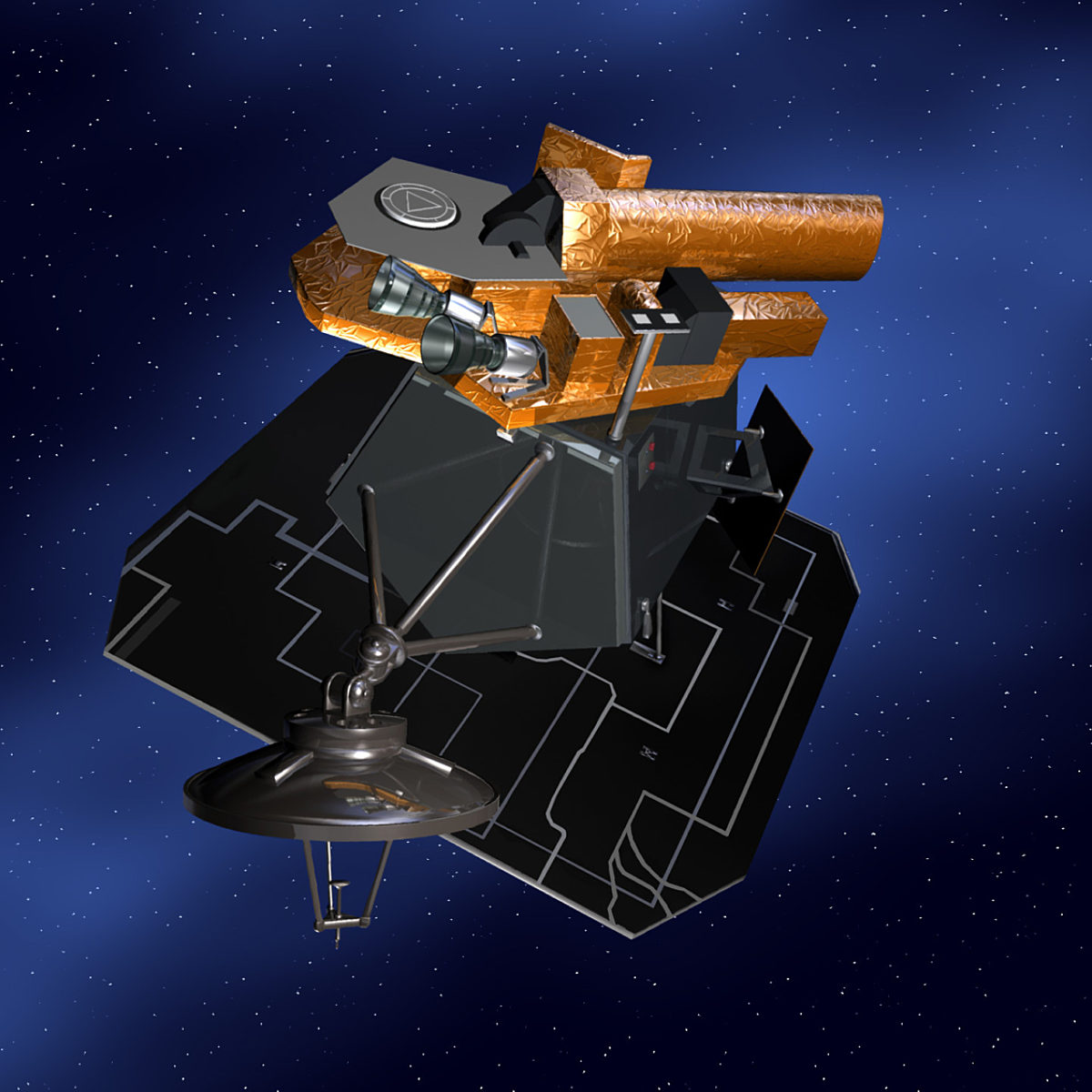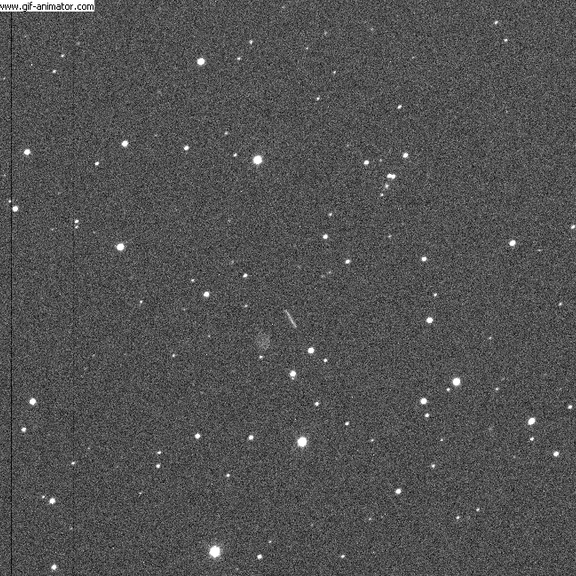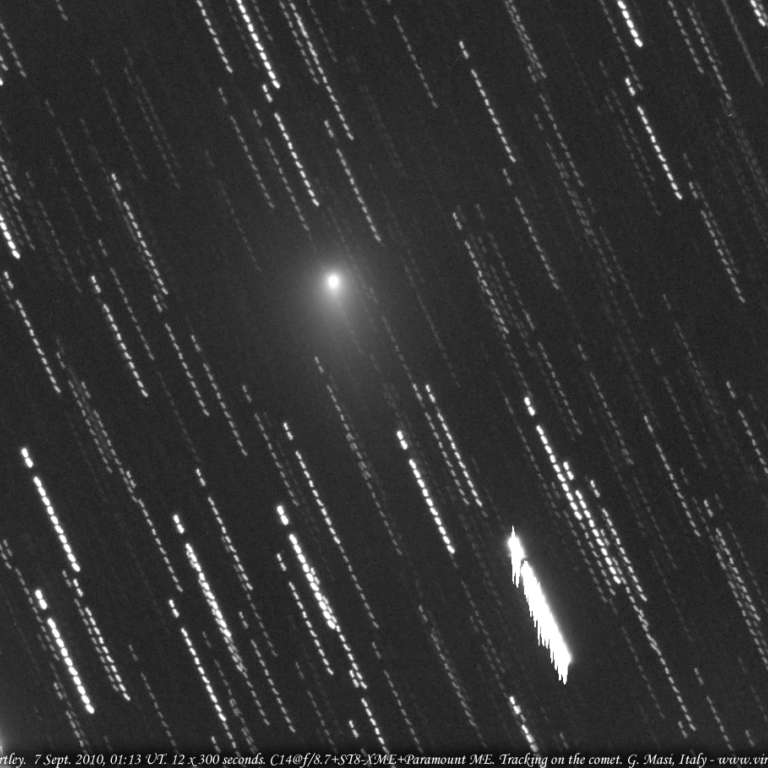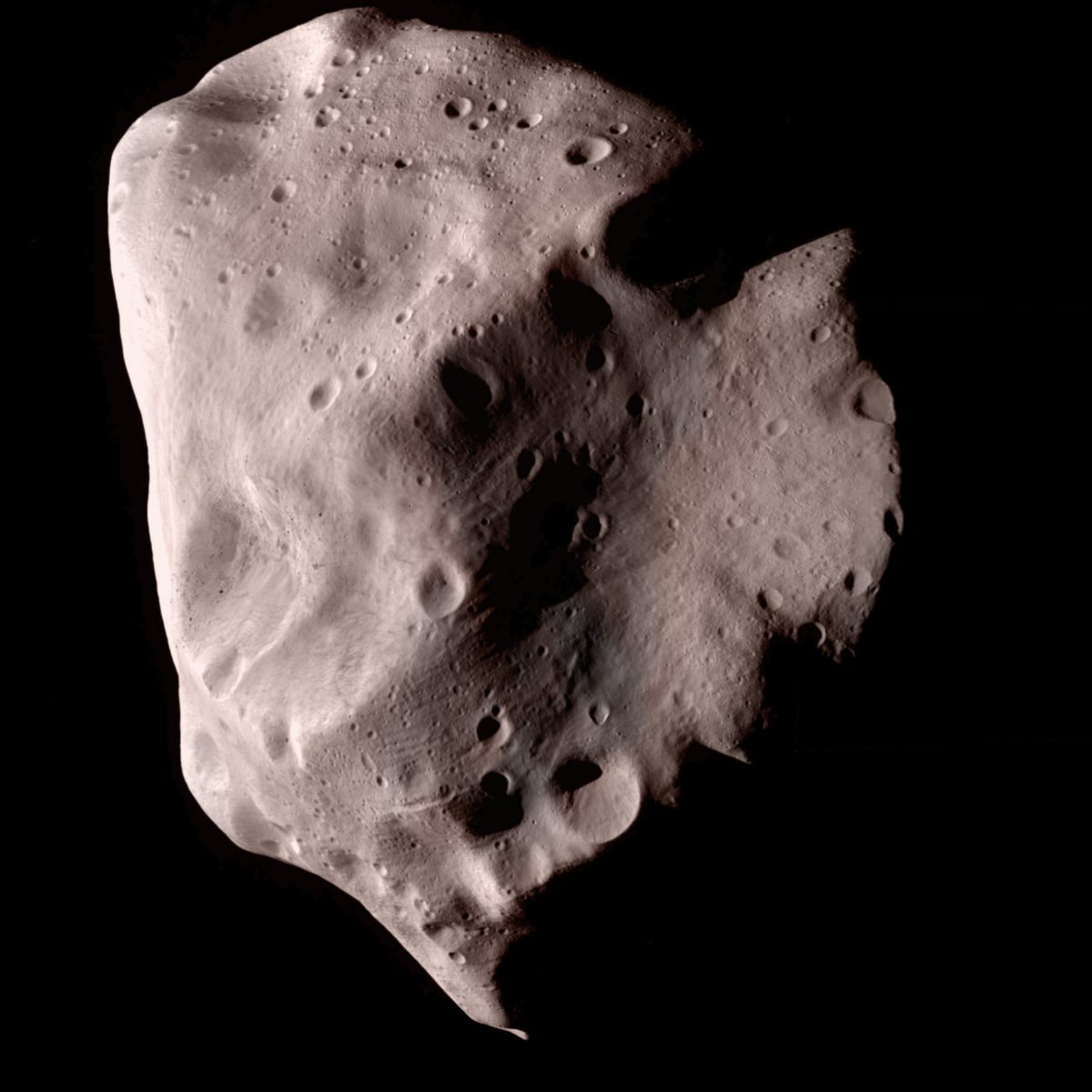All
All
Stories, updates, insights, and original analysis from The Planetary Society.
Hartley 2 compared to other comets, and in motion 3D
I had to catch up with tasks left undone at home today and didn't have time to write up my notes from the Hartley 2 press briefing, for which I apologize. I'll leave you for the weekend with three cool Hartley 2 pictures.
Five close-approach images of Hartley 2 by Deep Impact, with commentary
Here's the five close-approach images of Hartley 2 captured today, November 4, 2010, by the Deep Impact spacecraft, collected into one file. Boy, do these images reward close examination!
Hartley 2's jets
It was a very happy set of scientists, engineers, managers, and administrators who filled the Jet Propulsion Laboratory's Von Karman auditorium this afternoon to do the postgame show on Deep Impact's flyby of Hartley 2.
Animation of the five closest-approach Hartley 2 images
Those of you who follow my blog must have known this was coming: now that I got all five new Deep Impact images of Comet Hartley 2 posted and explained, I had to make an animation. Here they are.
Close approach images of Hartley 2!
What a dramatic and cool photo! An asteroid with two lobes like Borrelly, lumpy and bouldery like Itokawa, with gorgeous active jets, dramatically lit. Well done, Deep Impact team!
Deep Impact movies of outbursts from Hartley 2
Since comet Hartley 2 -- the target of Deep Impact's November 4 flyby -- is near its perihelion, it's no surprise that it's an active comet with lots of outbursts.
Three days until Deep Impact's encounter with Hartley 2
The week is finally here: Deep Impact flies past Hartley 2, the smallest comet yet to be visited by a spacecraft, on Thursday, November 4 at 13:50 UTC.
Arecibo images show Hartley 2 is elongated
Comet Hartley 2, the target for Deep Impact's close flyby (now just six days away!) made its closest approach to Earth on October 20, at a distance of 17.7 million kilometers.
Holy cow, is it really the 175th Carnival of Space already?
175th Carnival of Space!? That means the Carnival of Space has been going on for nearly 4 years. Or just about 2 Mars years. Pretty amazing.
A couple of tidbits from today's Deep Impact preview briefing
Today was the press briefing that previewed the upcoming Deep Impact flyby of Hartley 2.
DPS 2010: Pluto and Charon opposition surges, Nix and Hydra masses, Pluto and Eris compositions
An awful lot of the talks in the Pluto session on Tuesday morning, October 5, at the Division of Planetary Sciences meeting spent more time focusing on how bad weather conditions were during the astronomers' attempts to view Pluto as it occulted background stars than they did on any measurements or science that came out from the data.
Deep Impact approaching Hartley 2
The Deep Impact spacecraft team has released a third image from their approach to comet Hartley 2, and for me, three images is an invitation to make an animation!
365 Days of Astronomy Podcast: The Flight of Hayabusa
Today the 365 Days of Astronomy podcast aired my contribution, The Flight of Hayabusa, a recap of that dramatic mission.
Early warning for close approaches of two house-sized asteroids
Most of you have probably heard by now of two small asteroids, both in the neighborhood of 10 meters in diameter, recently discovered on trajectories that pass unusually close to Earth.
Deep Impact snaps first image of flyby target comet Hartley 2
Deep Impact is rapidly approaching its next -- and final -- target, comet Hartley 2, which it will fly by on November 4.
The Potential to Destroy Civilization? Now on YouTube
Visualization can help the brain comprehend what words and numbers can struggle to covey. There's a YouTube video posted by
2008 LC15, the first Trojan asteroid discovered in Neptune's L5 point
Congratulations to Scott Sheppard and Chad Trujillo for identifying the first known L5 Trojan asteroid of Neptune!
The Stardust Sample Catalog
It never ceases to amaze me how much science is being wrung out of the few grams of material that were returned to Earth by the Stardust mission.
Color portrait of asteroid 21 Lutetia
Since it doesn't look like the Rosetta mission is going to be releasing any color versions of their Lutetia close-encounter images any time soon, I figured it was time to make one.
How does Lutetia compare to the other asteroids and comets visited by spacecraft?
Almost a week after Rosetta flew past Lutetia, the asteroid is now a distant pinprick of light to the spacecraft, and the science team is getting down to the business of analyzing their data.


 Explore Worlds
Explore Worlds Find Life
Find Life Defend Earth
Defend Earth


 Sun
Sun Mercury
Mercury Venus
Venus Earth
Earth Mars
Mars Jupiter
Jupiter Saturn
Saturn Uranus
Uranus Neptune
Neptune Small Bodies
Small Bodies

















